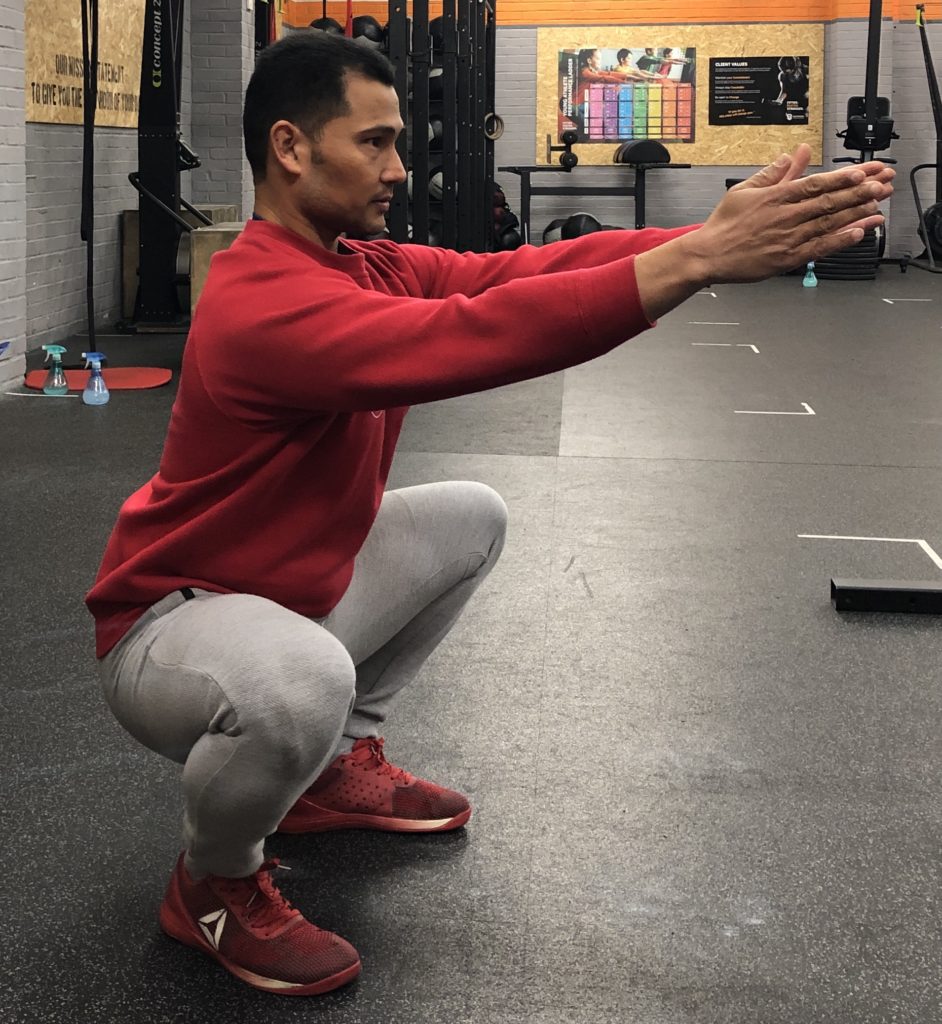Over the past few weeks at Gas Station Fitness, our programming has seen us building up our lower body strength in the back squat. It is an important movement in athletic development and one thing that we have insisted upon with our members is the need to squat below parallel for every rep. Squatting is the cornerstone of CrossFit movement. In fact, three of the nine foundational movements of CrossFit are squats – the Air Squat, the Front Squat and the Overhead Squat. At Gas Station we encourage our athletes to squat below parallel. This is where the crease of the hip passes below the level of the knee. However, in some training and fitness circles you may have heard that “deep” squats are “bad for the knees”. This article aims to dispel that myth and explain exactly why we promote squatting below parallel.

We see the squat as an essential movement pattern. To quote the CrossFit Journal “The squat, in the bottom position, is nature’s intended sitting posture (chairs are not part of your biological make-up), and the rise from the bottom to the stand is the biomechanically sound method by which we stand up.”
It is common across the developing world to see this position being adopted by people of many ages with relative ease and comfort for extended periods of time. Indeed, children old enough to walk retain the ability to do this naturally and effortlessly.

However, in the developed world with the sitting-dominant lifestyles that have taken precedence, we seem to have lost the ability to squat effectively. And this is likely where the root of the “deep squats are dangerous” hyperbole has come from.
The science
In terms of physiology, there are many things occurring when we squat and much of the misunderstanding seems to be centred around the mechanics. The quadriceps are not the only muscles that are supposed to be involved in this movement. When passing below parallel, the hamstring muscles on the back of the leg and the adductor muscles on the inside of the leg exert a balancing pull on the knee joint. In the bottom of the squat the quadriceps’ knee extension force is balanced by the hamstrings’ knee flexion force.
Research over the years has actually shown that deep squatting results in less movement between the tibia and femur. Less shear movement (shearing forces are unaligned forces pushing one part of a body in one direction, and another part the body in the opposite direction) and rotational movement between these two bones places less stress on the anterior cruciate ligament (ACL) and posterior cruciate ligament (PCL). These ligaments have often been a concern of those who criticise deep squats. The reduction in movement is likely a result of the increased glute activation, apparent when squatting below parallel, which improves stability at the knee joint and results in a decrease in shear stress across these two ligaments. (1)
Benefits
As mentioned previously, deep squats result in greater glute activation and therefore greater muscle activation overall. Greater muscle activation means higher force production and therefore, an increase in the load that can be handled by the muscles. Exposing the body to higher loads means exposing the body to higher stress. As much as we want to avoid shear stress at any particular joint, stress on the body through training is required to promote adaptation and strength gains. Performing deep squats correctly exposes you to these stresses, which will help your body adapt to higher forces.
As an example, running and jumping are both high force activities. Therefore, athletes who perform deep squats will be better adapted to handle these high forces, resulting in faster sprints, higher jumps and the reduction in transmission of these forces to ligaments and tendons. (2)
Things to be aware of
Body control matters. It is definitely possible to injure yourself when squatting. However, it is also a relatively simple matter to bring the squat to a safe and everyday activity.
This article isn’t intended to teach you how to squat correctly. The first steps in any advice would be to listen to your Coach. We are of course presuming the the Coach in question has been given some education on how to instruct functional movements e.g. CrossFit Level 1/2. It is far easier to have a Coach analyse and critique your mechanics than it is to take the time to study the movement, learn the points of performance, film yourself doing the movement and then self analyse (although this is entirely ok too).
Second is to check your ego at the door. If you are unable to perform a mechanically sound and stable air squat, for multiple repetitions, under fatigue, then you should have no reason to believe that you will be able to do so under load. The CrossFit methodology teaches – Mechanics, Consistency and ONLY THEN, Intensity. Again, if you are unsure, defer to your Coach.
In summary
Squatting below parallel is as safe as any other functional movement. As with all exercise, the risk of injury is inherent. It is the risk we take to strengthen and prepare our bodies for the trials of life. However, if you train smart, eat well, sleep better, listen to your coach and ALWAYS focus on movement over intensity, then you very much reduce those risks. And if you want to run faster, jump higher and just generally be better at life – then you’d better squat below parallel!
If you would like to find out more about Classes or Personal Training please visit our website.
Written by James Macdonald – Coach
References
- Ciccone, T., Davis, K., Bagley, J., Galpin, A. (2016). Deep Squats and Knee Health: A Scientific Review. Center for Sport Performance, California State University, Fullerton
- Salem, G., Power, C. (2001). Patellofemoral joint kinetics during squatting in collegiate women athletes. Clinical Biomechanics 16: 424-430






